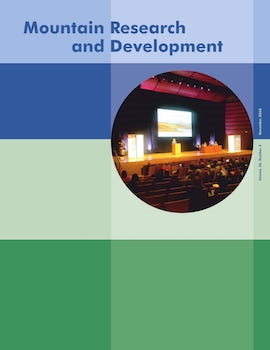The Perth conferences, held every 5 years in Perth, Scotland, bring together people who identify as mountain researchers and who are interested in issues related to global change in mountain social-ecological systems. These conferences provide an opportunity to evaluate the evolution of research directions within the mountain research community, as well as to identify research priorities. The Future Earth Strategic Research Agenda provides a useful framework for evaluating the mountain research community's progress toward addressing global change and sustainability challenges. Using a process originally set up to analyze contributions to the 2010 conference, the abstracts accepted for the 2015 conference in the context of the Future Earth framework were analyzed. This revealed a continued geographic underrepresentation in mountain research of Africa, Latin America, and South and Southeast Asia but a more even treatment of biophysical and social science themes than in 2010. It also showed that the Perth conference research community strongly focused on understanding system processes (the Dynamic Planet theme of the Future Earth research agenda). Despite the continued bias of conference contributions toward traditional observation- and conservation-oriented research, survey results indicate that conference participants clearly believe that transdisciplinary, transformative research is relevant to mountains. Of the 8 Future Earth focal challenges, those related to safeguarding natural assets, promoting sustainable land use, increasing resilience and understanding the water-energy-food nexus received considerable attention. The challenges related to sustainable consumption, decarbonizing socioeconomic systems, cities, and health were considerably less well represented, despite their relevance to mountain socioeconomic systems. Based on these findings, we outline a proposal for the future directions of mountain research.
How to translate text using browser tools
1 November 2016
Mountains of Our Future Earth: Defining Priorities for Mountain Research—A Synthesis From the 2015 Perth III Conference
Erin H. Gleeson,
Susanne Wymann von Dach,
Courtney G. Flint,
Gregory B. Greenwood,
Martin F. Price,
Jörg Balsiger,
Anne Nolin,
Veerle Vanacker
global change
social-ecological systems
sustainable development
transdisciplinary research
transformative research





